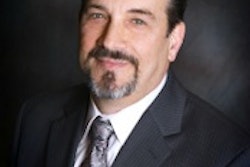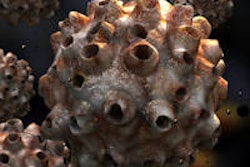
LAS VEGAS - The statistics are chilling: Oral cancer now kills nearly three times as many people as cervical cancer. Every hour, someone dies from the disease. This year, 37,000 Americans will be diagnosed with oral cancer, and 25% of them will die of it.
So it is crucial that dentists check their patients for it regularly, according to John Flucke, DDS, a general dentist from Lee's Summit, MO, who writes a technology blog and lectures regularly about dental technologies.
"It's under the radar," he said, referring to the fact that the rising occurrence of oral cancer has not been widely reported.
In a presentation on oral cancer at the ADA annual session this week, Dr. Flucke stressed the importance of dentists incorporating oral cancer screening into their regular practice routines.
“Dentists really are oral physicians.”
— John Flucke, DDS
Since dental professionals have been trained to spot unhealthy characteristics in the mouth and many medical doctors often don't check the oral cavity, dentists should make it part of routine exams, he said.
"Dentists really are oral physicians," Dr. Flucke said.
Only 20% of the U.S. population gets annual oral cancer screenings, according to the National Cancer Institute.
Incidence of the disease is growing, especially among those who don't fit the traditional profile. Instead of older people who drink and smoke, oral cancer has become more common among people between 25 and 50 years old. Studies show it is increasingly being linked to human papillomavirus (HPV) 16 and 18 among people who have had more than three sex partners, Dr. Flucke said.
He starts oral cancer screening of patients when they are 15 years old and repeats it every six months. Such screening only takes three to five minutes for a visual exam and physical palpation, Dr. Flucke said.
HPV-related oral cancers generally occur in the posterior regions of the mouth, including the pharyngeal tonsil, he noted.
Most oral cancers are survivable if detected early. However, most are not found until the disease is in the later stages, when five-year survival rates drop to 20% to 30%.
"I tell patients if they have trouble swallowing for prolonged periods to get it checked, or if they notice anything lumpy, bumpy, or that feels out of place," Dr. Flucke advised.
Suspicious lesions or inflamed areas could result from injuries, so dentists should do follow-up checks 10 days later, he recommended.
The escalating incidence of HPV-related oral cancers, particularly after actor Michael Douglas' battle with oropharyngeal cancer, has increased awareness among medical professionals and the public about the disease.
The incidence in oral cancer patients younger than age 40 has increased nearly fivefold, with many patients having no known risk factors, according to the ADA. Only 57% of all oral cancer patients will still be alive five years after their diagnosis, according to the American Cancer Society.
Staff training, especially with hygienists, and discussing new protocols for oral cancer screening is important, Dr. Flucke said.
If dentists are sufficiently concerned to refer a patient to an oral surgeon for biopsy, he advised practitioners to assure the patient that it does not mean they have oral cancer, just that it is important to be cautious.
As part of his oral cancer screenings, Dr. Flucke uses DentalEZ's Identafi device, which uses fluorescent technology to detect mucosal abnormalities. The small, cordless device uses a combination of white, violet, and green-amber multispectral wavelengths to find suspicious lesions.



















